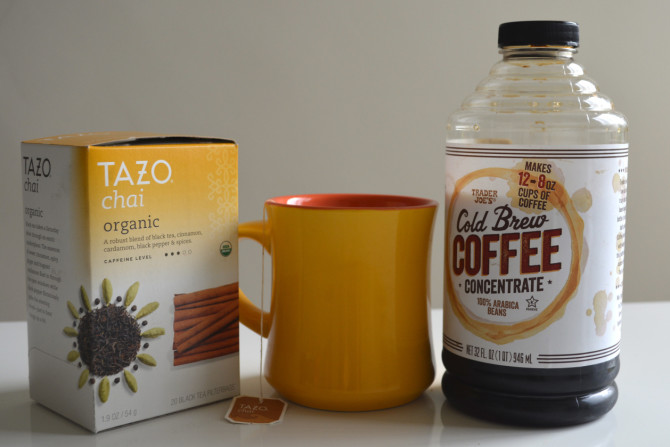As a self-proclaimed health nut, I tend to scoff at the idea of fad diets. I find them to be complete bogus, tricking their followers into believing they work with quick weight-loss results (that’s what happens when you eat 500 calories of cabbage soup a day), that last no longer than a week and offer no long-term solution to a healthier lifestyle.
But, after an over-indulgent fall semester in Europe, followed by a semester overrun by stress munching and a summer that offered more ice cream than my body was capable of processing… I figured I needed something to shock my body out of its bad habits. That’s when Dallas and Melissa Hartwig’s Whole30 Program caught my eye on Instagram.
I began browsing through photos of scrumptious frittatas, nutrient-packed salads and epic dinner platters of homemade salmon patties, dense sweet potato wedges, crispy roasted vegetables and creamy smoothie bowls. This I had to try.
So, I began my research to know exactly what I was getting myself into (very important in any type of diet-adoption, lifestyle change). I flipped through Hartwig’s It Starts with Food and googled ’til my eyes burned. On August 31, I threw away all non-compliant foods, wiping my cabinets clean and began my month-long dedication to the Whole30. The Whole30 has strong roots in the paleo diet and demands that you clear your daily intake of all dairy products, grains (this includes quinoa, corn, rice and oats), legumes (no peanut butter), soy products (drop that soy sauce and edamame), no sugars of any kind (this means no maple syrup, coconut palm sugar, or honey), no alcohol (here’s where college interferes…) and no added preservatives, artificial flavors, or anything made in a lab. It sounds restrictive, but when you start thinking about the foods you can eat, 30 days doesn’t seem all that hard: Smoothies, salads, steak, fruit and veggies galore, all topped with a fried egg and guac.
D24 M1 // Fall inspired sweet potato & banana sautéed in coconut oil with nutmeg, cinnamon, ginger & grey Celtic sea salt with 2 fried eggs. My favorite #whole30 A photo posted by The Wandering Spoon (@thewanderingspoon) on Sep 23, 2015 at 6:17am PDT
The Whole30 is all about reseting your relationship with food, fueling your body with the best possible ingredients and ultimately changing how you view food for the long-term (ding, ding, ding: long term). You’re not allowed to weigh yourself or take any measurements during your 30 days. The focus is on health rather than weight-loss. Ding, ding, ding, again.
Now, time for meal planning. The Hartwig team highly recommends meal planning for a successful Whole30 and I honestly think it was what saved me in some particular scenarios. It also saved me a bucket load of cash each week on my grocery bill. Seriously, who says eating healthily has to be expensive?
Of course, meal planning can be time-consuming. I spent about two hours each Sunday, maybe more, kicking my roommates out of our shared kitchen to roast veggies, make turkey meatballs, grind cauliflower and boil eggs. But, it was a real time-saver in the long run. I packed my lunches for the weeks, had snack packs of nuts and dried fruit (which Whole30 says to limit) and I felt like I was ready to take on the world.

Photo by Lila Seeley
Week one done and I passed with flying colors. I was feeling great.
Week two and my college life began to slowly hammer a wedge in between me and my successful month of Whole30-ing. It’s hard in school, not wanting to sacrifice your social life for some sweet potatoes and grilled chicken. Nights out led to some rule breaking and late-night nachos (only once). Maybe a glass, or two, of wine at dinner.
I had my moments where I felt I had failed. Whole30 states that with each slip up, you should restart your 30 days. That I didn’t do. But, I persevered. I awoke each morning with a nutrient-packed, filling breakfast and my daily meal plan to stay on track. I fought off most sweet cravings with a spoonful of almond butter or some fruit. I also discovered so healthy tricks and swaps, like adding cold brew coffee to chai tea for a little flavor to break up the bitterness of black coffee. Or, cauliflower rice and zucchini noodles in place of their carbohydrate-heavy alternatives.

Photo by Lila Seeley
I may have not had such amazing, noticeable results following the Whole30 as many testify to on their website. My skin was clearer, though and I finally broke my perpetual treat-cravings. I adopted a love for tahini, cauliflower rice and roasted veggie salads with coconut and pepitas.
D29 M2 // big lunch for a long day #whole30 A photo posted by The Wandering Spoon (@thewanderingspoon) on Sep 28, 2015 at 9:24am PDT
I personally believe that The Whole30 is a great program for anyone of any age to try. There are some sacrifices to make for a fully successful 30 days, but it’s only 30 days. In the words of Melissa Hartwig, “you can do anything for 30 days. It’s not hard.”
It’s important to put your health first, especially during the stress of college. A program with an emphasis on health over weight-loss is an ideal place to start. And, lastly, don’t get too down on yourself if you slip up. Life’s about living, drinking wine with friends and ending your evenings with a nibble (or ten) of chocolate, not strictly adhering to 30-day reset programs.

